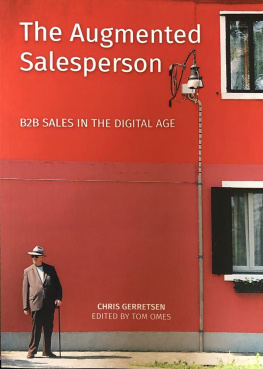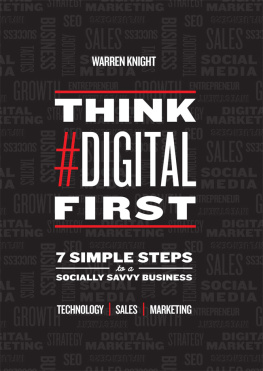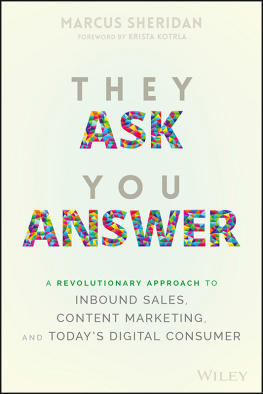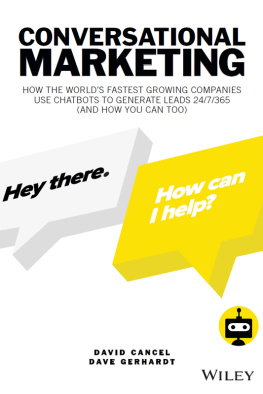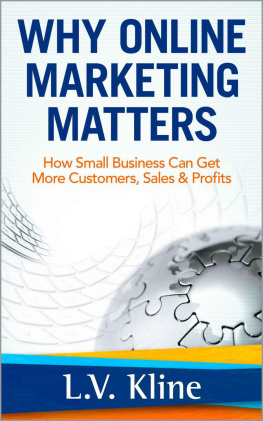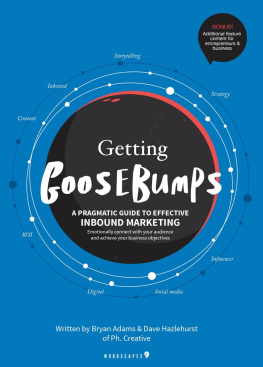
Prologue
We are great supporters of equal treatment of men and women. Therefore, any person indicated in this book may be male or female. This does mean that whenever we mention salespeople, we are forced to specify whether they are male or female every time. The same is true for customers discussed in this book. This immediately introduces the two main players in this book in one fell swoop: salespeople and customers. We have opted for an honest division to maintain easy reading: salespeople are men and customers are women. If you want to reverse the roles, please feel free to do so in your mind.
Chapter 1: The sales representative
When I was young, very young, about 8 or 9 years old (this is the 80s of the previous century we are talking about: Ronald Reagan was president of the United States, Champaigns How bout us was number 1 in the charts for weeks and Aston Villa won the Europa Cup 1), an extraordinary man lived in our street. He stood out, because he was different from the other people in our street. It was a very respectable street, in a respectable village, where people dressed respectably and certainly not flashily. The street was home to a science assistant at the local secondary school, a carpenter, a lab technician and a care institution HR manager, whose position was still just called Head of Personnel at the time. However, the gentleman I am referring to was very different to these people. He was dressed immaculately. He always wore a suit, often with a checked pattern. With the exception of Saturdays, he always wore a tie, held in place by a gold tie clip. His dark brown, wavy hair was so meticulously styled that even the strongest storm wouldnt put a hair out of place. He drove a large green Mercedes that never seemed to have a speck of mud on it. Twice a week, he drove this Mercedes out to the local tennis club, where he and his wife were much-loved guests who participated in the bar shifts too. He wasnt the athletic type and would never be club champion, but his impeccable reputation commanded respect nonetheless. He had two sons, both equally as respectable as their father, who would eventually both become business economists at a bank, after a fairly hassle-free (though rather boring) time at university.
As predictable or even boring as Rolands - such was his name - life may seem, as a child I thought it was fascinating. And despite the fact every house in the street was the same, I felt that Roland had the best job out of everyone and earned the most money.
My father told me he was a sales representative. What a special job that must be!
Later, I understood that Roland was a sales representative for paint. He needed the large green Mercedes to transport the tins of paint he showed his customers. He made his daily rounds through his allocated area and ensured that his customers - mainly paint shops and decorating businesses - all received exactly the right amount of attention. This had been Rolands job for years and he knew his customers like the back of his hand. In turn, the customers knew that they could depend on Roland: he knew everything about the various paints his company Stibio had developed and sold over the last 20 years and was always on hand to provide reliable and informed advice. His most important customers even had his private number, so they could reach him at home in the evenings. Not that this was ever necessary, by the way, but they felt reassured by having the option. Every now and then, Roland had to have a difficult conversation with a customer, such as if another paint manufacturer tried to convince the customer to change suppliers. Roland would have to use every trick in the book and his product knowledge would be put to the test. He would be expected to refute the competitors claims as to why they would be able to supply a better, more efficient or otherwise superior product. Roland found this part tricky sometimes. He was a business relationship nourisher, and found it difficult to counter criticism - even if it was just business. However, it was exactly this customer relationship - combined with bonuses and discounts created especially for situations like these - that was the deciding factor after all was said and done. After all, Roland served as an expert advisor for the customer, one who regularly offered good promotions and interesting incentives to boot, but above all, he was someone they could trust.

Chapter 2: The sales executive
In 1995 (by now, Bill Clinton was president of the US, Zombie by the Cranberries dominated the charts for weeks and Ajax won the Champions League), I embarked on my first serious job. I became a salesman at Vidria, a software company that sold communication solutions to large enterprises. I was initially responsible for the Russian market, and then Southeast Asia shortly after that, once my boss realised there was more potential there. My boss was an adept of the new age. A very clever lad, with a deeply technical background who saw an opportunity when Microsoft bought a product that would later be developed into Outlook, the first business email programme in the world. He was very knowledgeable on Microsoft technology, understood the companys vision and strategy and decided to develop solutions that could be tagged onto Microsoft products. This way, he piggy-backed on the success of Microsofts rapidly growing products and could also utilise the reseller network being built by the software giant across the globe. When the 1.0 version of the software solution developed by Vidria was ready, he hired a few salespeople whose task it was to approach the sales channel built by Microsoft and sign these dealers, resellers, system integrators and distributors as Vidria channel partners. I was one of those salespeople.
Vidria was sailing with the wind. The market was booming. Microsoft was skyrocketing. The company was superhot, its products and platforms were selling like hot cakes, as did any added-value solutions. Microsoft-certified vendors were all scrambling to work with Vidria. As such, my first months at Vidria were a walk in the park. Resellers picked me up from the airport, wined and dined me, obediently drafted their sales and marketing plans and happily joined the weekly sales calls. Just as I was starting to think this was the normal state of affairs, the first competitor showed up. An Australian software developer and a few American companies began offering more or less the same solutions, but for less money. Vidria had hardly had any competition before, and now it was popping up everywhere. My boss seemed to relish the challenge. It gave him a chance to boost his already huge ego, by dispatching other parties with our superior customer benefits. Fuck the features! he used to shout constantly. Large companies want a solution that works and saves them money. In his opinion, features that did not directly contribute to this were useless.
Oftentimes, his approach worked. Many customers opted for Vidrias solutions due to the significant efficiency savings they achieved, combined with the very low total cost of ownership. However, this differentiation strategy proved to be insufficiently distinctive in some cases. Although our product was great and we knew we were the best, it turned out that customers didnt always value Vidrias superiority.
So then, the salespeople collaborated with the marketing team to come up with a winning strategy. The magic word was verticalisation. As well as the superior customer advantages provided by the technology developed by Vidria, we also had to demonstrate we were the right party for the relevant customer. Whereas our competitors tried to serve every market with a single solution, we adapted Vidria based on the prospects specific market segment characteristics. Vidria was mainly used by companies and organisations that were involved in lots of electronic communication with external parties. Our target segments were banking & finance, but also telecom, utilities, healthcare and shipping.
Next page
